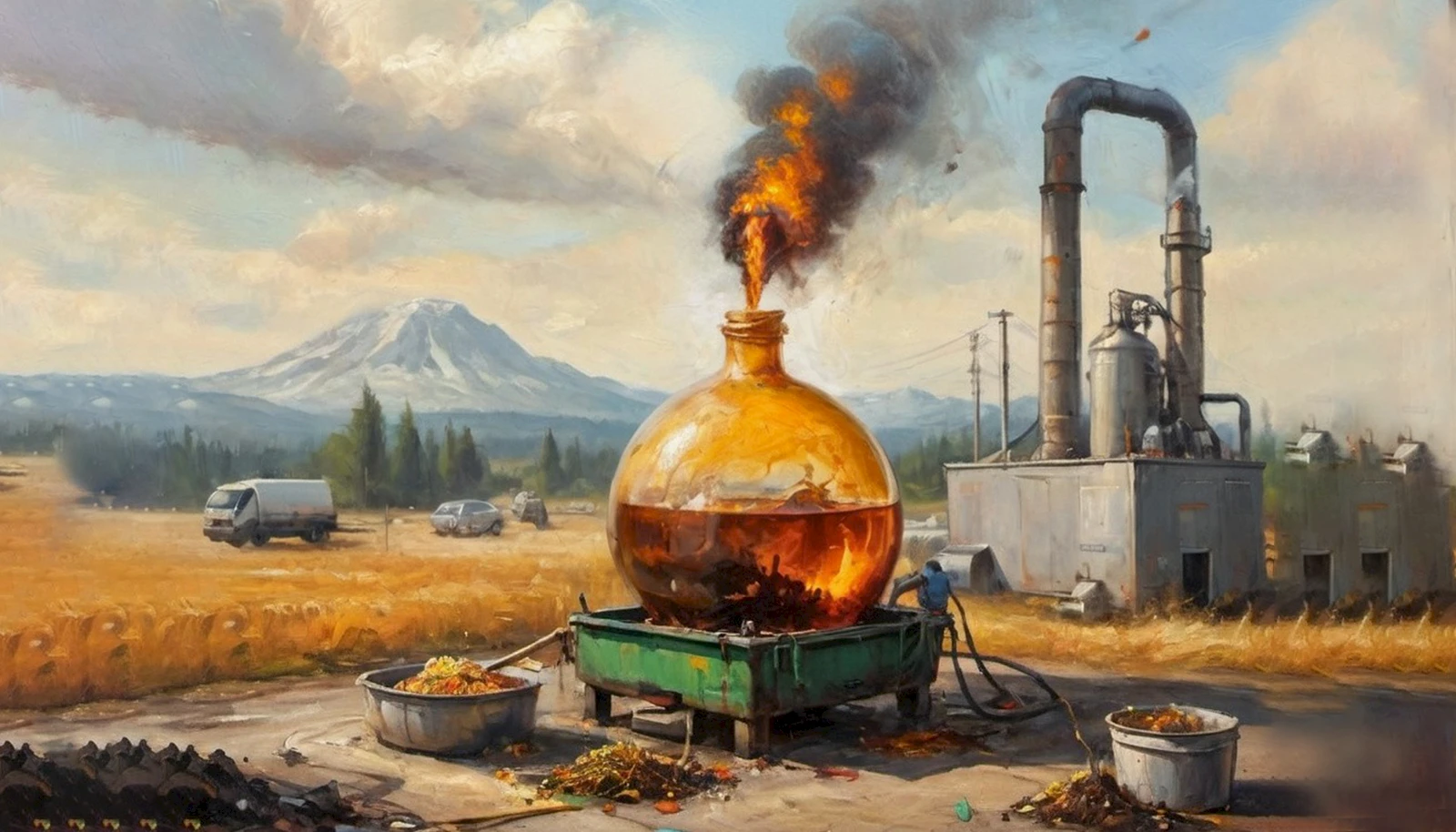Changing the Biodiesel Game With Pyrolysis

Editorial / August 20, 2025
Spanish painter, sculptor, and co-founder of the Cubist movement, Pablo Picasso, might have meant something entirely different when he said that every act of creation is first an act of destruction. Yet, little did he know that chemical engineers would take this concept and use it to tackle food waste while producing biodiesel-rich oil.
As industries struggle to find cost-effective biodiesel-rich oil, a team of scientists led by Prof. Sanjeev Yadav from the Department of Chemical Engineering has successfully achieved this using food waste. Their novel technique ensures that the resulting biodiesel requires minimal refining.
In a study published in the Journal of Environmental Chemical Engineering, Professor Yadav highlights how advanced thermochemical methods can unlock food waste’s potential. The research examines fast pyrolysis, where food waste is rapidly heated without oxygen to produce bio-oil. The team specifically investigated Hot Vapour Residence Time (HVRT)—the period during which vapours remain in the reactor before condensing. Adjusting HVRT between 40 and 2 seconds produced striking variations in yield and composition.
At around eight seconds, bio-oil yields peaked at 53%, splitting into two phases: an aqueous layer with nitrogenated compounds, furans, and sugars (with uses in pharmaceuticals, plastics, and cosmetics) and an oil phase dominated by fatty acid alkyl esters (FAAEs), directly convertible into biodiesel. Interestingly, at extremely short HVRTs of about two seconds, the bio-oil no longer separated into two phases, instead forming a single, uniform oil with even greater biodiesel potential.
Building on this, Professor Yadav tested other waste biomass of similar quality in terms of chemical composition, but with additional advantage of homogeneity and contiuity in supply to commercial level production. Cotton stalk (CS) is one of them which is produced in large quantities in and around Maharashtra, Gujarat, Telangana, and Karnataka region. Other such waste biomass are also being explored for large scale biodiesel production.
This breakthrough simplifies downstream processing, making it more appealing for industrial use.
Commenting on what inspired him to undertake this research, Professor Yadav says, “A B.Tech. student came up to me in and asked for doing something about the food waste generating in the dining hall and my answer was “sure”. However, in place of treading the traditional path of composting, anaerobic digestion, or fermentation, we leveraged the inherent ability of thermochemical processes including pyrolysis for producing biodiesel.”
Conducting the research using a fixed bed pyrolyzer in the University’s Waste to Wealth Lab, Professor Yadav says the research will continue for increasing the biodiesel yield via co-pyrolysis with mixed feed.
The selection of co-feed will be an important part as it should contain much more required chemical than that in food waste or cotton stalk. The study carries particular importance as the demand for waste-based biofuels grows. The global biofuels market is projected to hit $201 billion by 2030, with biodiesel playing a critical role in decarbonizing transport sectors that cannot fully electrify. One of the largest challenges, however, lies in sustainable feedstock availability. Crop-based feedstocks such as soy and palm oil present ethical and environmental issues, including deforestation and food security risks. Waste biomass (food waste and cotton stalk, on the other hand, is abundant and inexpensive. Under ideal conditions, the study found that these waste can produce biodiesel-ready FAAEs with high yield of ~20%.
Redirecting waste biomass into pyrolysis-based biorefineries could accelerate India’s clean energy transition, lessen landfill reliance, and help the nation meet its Paris Agreement climate targets. Globally, these technologies could play a key role in net-zero strategies by 2050, enabling countries to cut fossil fuel dependence while also addressing waste management challenges.
In a sector where every cost margin matters, this approach delivers a rare triple win: lower feedstock costs independent of volatile vegetable oil markets, reduced environmental impact by diverting waste biomass from landfills/burning in open fields and cutting methane emissions, and stronger carbon credentials that ease compliance with tightening emissions regulations—all achieved by fine-tuning just one process parameter.
This is not a small improvement—it’s a fundamental shift in how biodiesel economics are viewed. Waste biomass is abundant, renewable, and vastly underutilized. With HVRT-optimized pyrolysis, it could power a new era of cost-competitive, low-carbon biodiesel production worldwide. In short, the next time you scrape your plate, those leftovers might just be fueling a bus, a truck, or even your own car. And thanks to this innovative process tweak, that future could be closer than we think.
More Blogs

The Hawthornden Literary Retreat bestowed on Dr Sambudha Sen to complete the manuscript of a novel
Professor Sambudha Sen, Head of the Department of English at Shiv Nadar Institution of Eminence, Delhi-NCR, was awarded a residency at the...

The Power of the Moving Body
Movement is an innate bodily action that humans have been exhibiting for the longest time. Long before language was invented, the body was the...

How Does A Multi-Disciplinary Approach To Education Enhance Learning And Prepare Students For A Multi-Faceted World?
In today’s world, where businesses are changing almost every day, it is the responsibility of educational institutes to provide holistic...